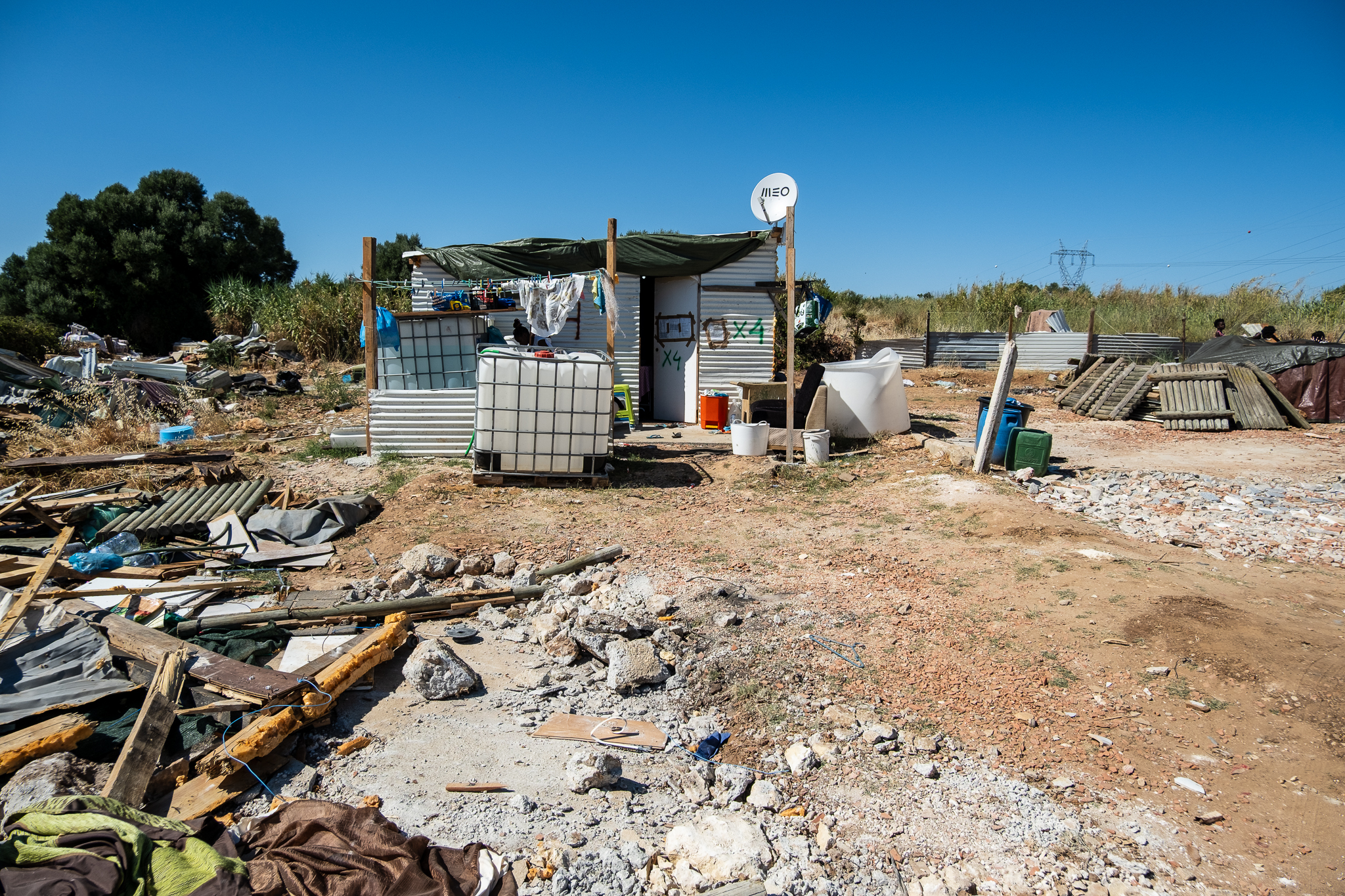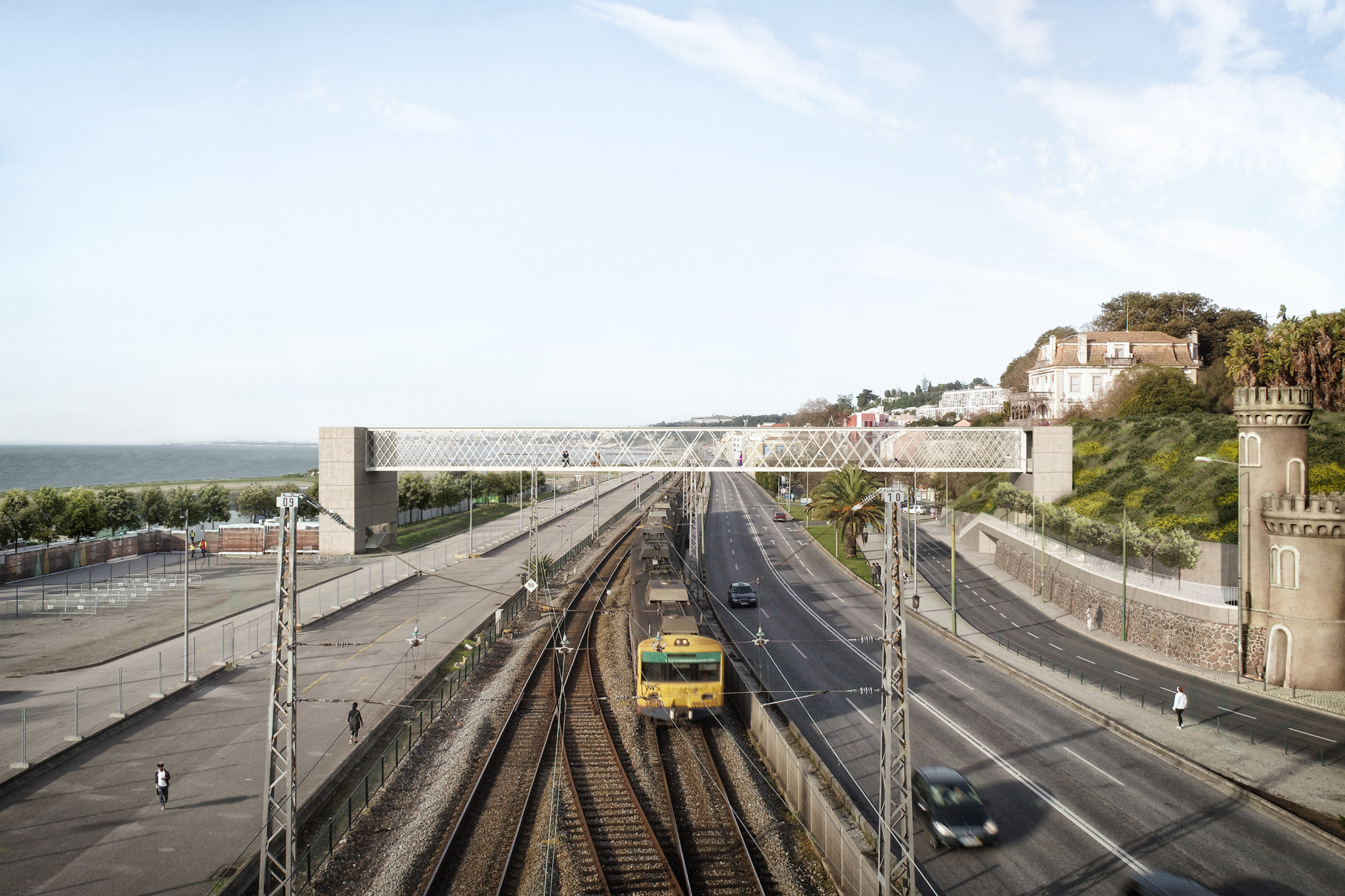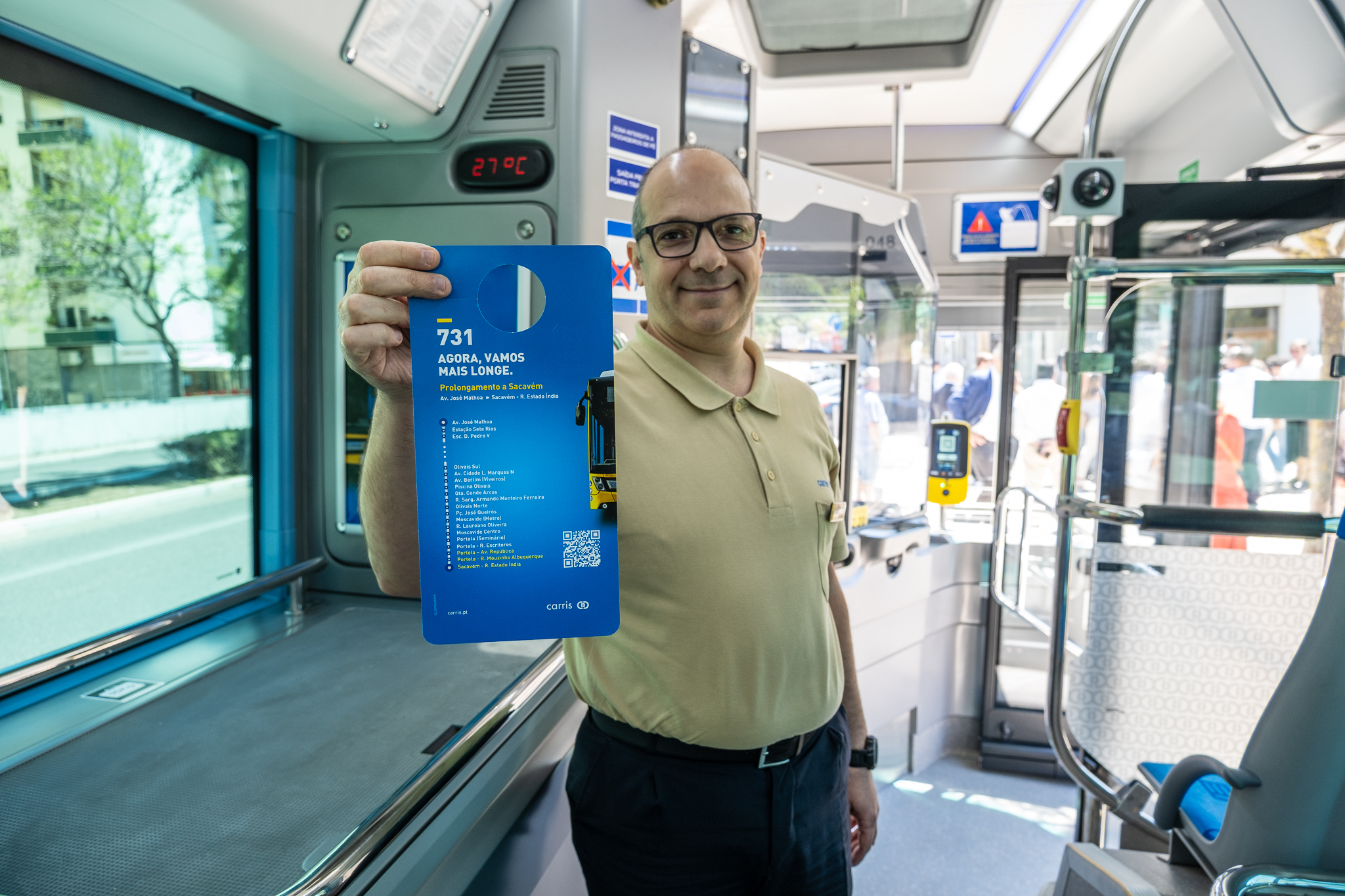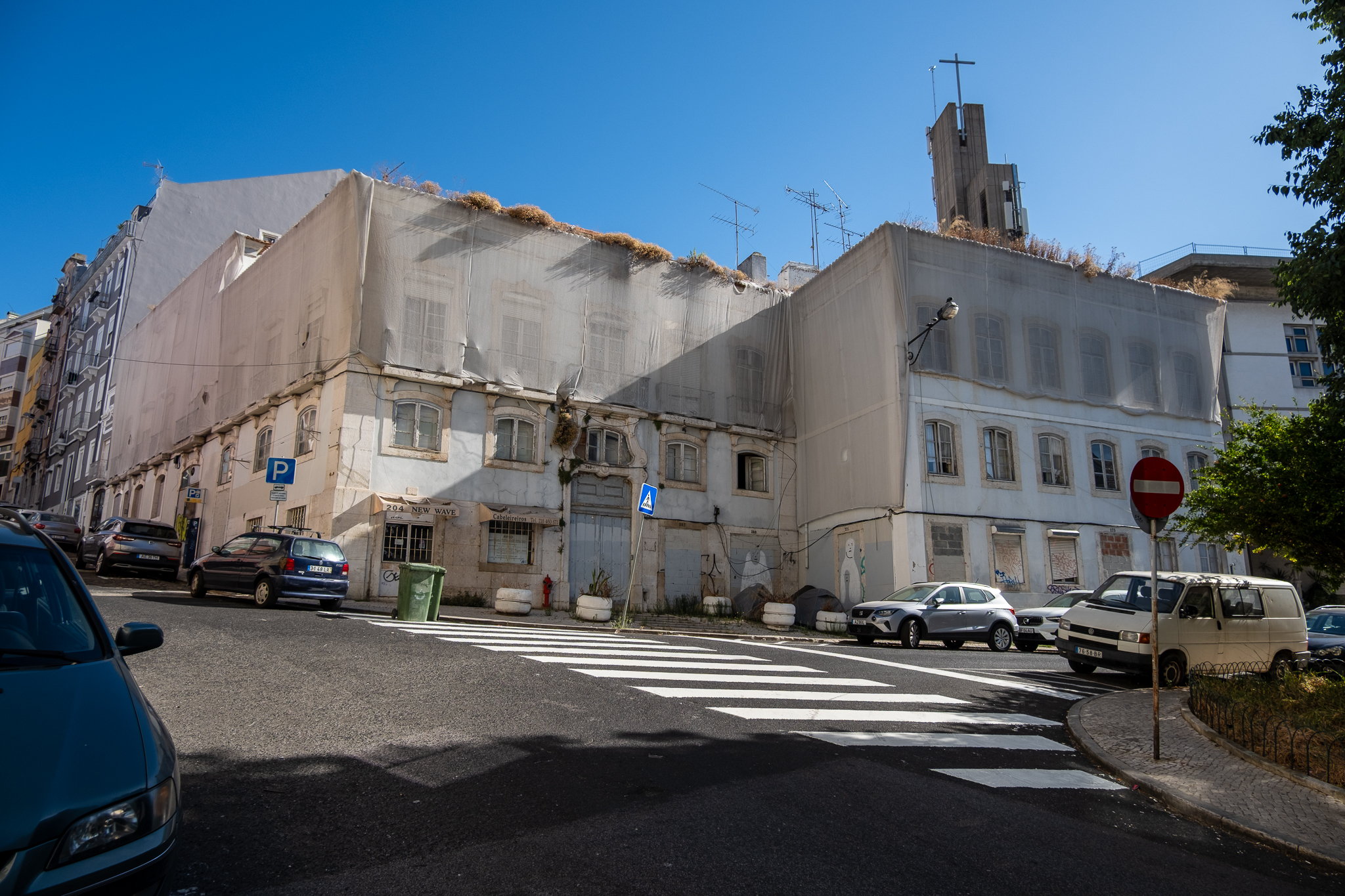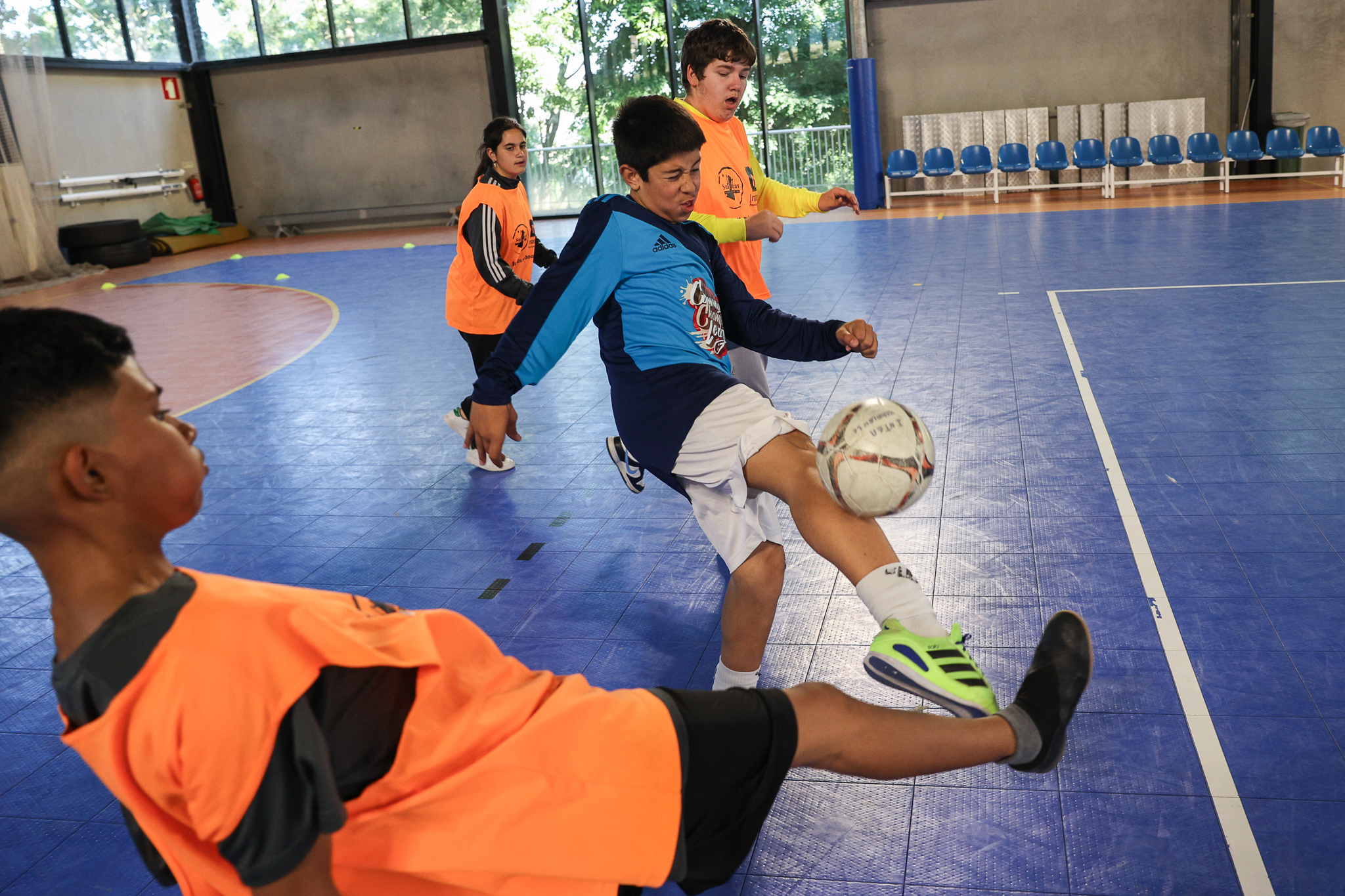
The media, in particular the mass media, play a direct and powerful role in the overall construction of the world. As political scientist Flávia Biroli writes, "the relationship with the world is mediated by images produced and disseminated on an industrial scale, making our references a fusion between the world with which we have direct contact and the world we know through TV screens, the Internet and the pages of magazines and newspapers"; and, many times, "we are guided by a set of information whose relevance and pertinence we cannot, most of the time, measure without resorting to the media itself". The media can contribute to the reproduction of stereotypes, to their reorganization, or to the construction of new stereotypes. "Stereotypes collaborate (...) so that the news media traverse the complexity of the processes of formation of identities without problematizing them, by disposing these identities as objective data, from naturalized moral values."
In 2019, 26 bicycle users died, 106 were seriously injured and 2104 were lightly injured. In that same year, 134 pedestrians lost their lives on Portuguese roads, most of them by being run over; 409 were seriously injured and there were 5180 light injuries. The data are from the National Road Safety Authority (ANSR), which recorded in the year 2019 (pre-pandemic) a total of 35,704 accidents - 78% of these occurred within localities and 75% involved light vehicles. In all, 626 people lost their lives that year in Portugal due to road accidents. "That's 3 A320 planes crashing a year in our country without any survivors. They are fathers, mothers, children, grandparents, grandchildren, friends and colleagues who left too soon and are no longer with us. It's more than a thousand families that are torn apart, it's thousands of people affected, and it's an annual economic and social cost to society of more than 2 billion euros.", as ANSR puts it.
Pedestrians and cyclists are the most vulnerable road users. Unprotected by an urban design that centers on cars, they are often victims of excessive speeds and an infrastructure that does not protect them. This is why there is increasing talk of reducing the urban speed from 50 to 30 km/h and in redesigning neighborhoods, streets and avenues with calming measures such as reducing road widths, raising crosswalks or creating coexistence spaces. Yet if, despite all this effort to adjust urban space to protect the most vulnerable, a vehicle collides with a pedestrian, the likelihood of the pedestrian surviving is much higher at 30 km/h than at 50 km/h, the driver's visibility is greater, as is his reaction time.
The way this issue of speed is represented in the media is of the utmost importance if cities are to be calmer and safer places. Also, the way in which the problem of road accidents is dealt with will be essential to change society's perception and to bring about some change. British journalist Peter Flax has written some recommendations, highlighting one: avoid the word "accident"This may suggest a lack of responsibility, that the incident occurred unexpectedly and without deliberate cause. Many incidents are caused by inattention, reckless driving, or poor road design, and can therefore be prevented. At the time when one of these situations is being reported in the media or by the authorities, one does not yet have much data to be able to determine whether it was an innocent or negligent situation. Therefore, neutral terms such as "accident" or "collision" are preferred.
Another important point is to recognize the human factor in claims. It is not a car that fatally runs over a pedestrian, but a driver who innocently or negligently kills another person. You don't see news reports of people killed by knives or bullets, but rather by an armed individual. News stories with titles like "Minister Eduardo Cabrita's car fatally hits one person on the A6" They devalue the existence of a human driver and place the focus on an inanimate object. In reporting road accidents it is important to note that the information available is usually incomplete, based on a preliminary police report, not taking into account all witnesses or listening to only one source - for example, the driver's side. Therefore, it is important to avoid speculative and dubious statements about what might have happened, to avoid blaming the victim, to contextualize the accident in the state of the art of road safety, or to seek experts who can give a scientific context to the accident.
"When covering an alleged sexual assault case, a competent journalist would never include a passage about what the victim was wearing. Similarly, stories about pedestrians and cyclists should not tell if they were wearing dark clothing-they were killed because someone driving a multi-ton object hit them. In the same vein, stories should avoid mentioning whether or not the victim was wearing a helmet; the obvious implication is that perhaps a passenger hit by a city bus could have avoided his own death."
- Peter Flax
Peter Flax's article is especially interesting - even for non-journalists - and you can read it in its entirety here, on the Medium platform. Another interesting feature is Active Travel Academy from the University of Westminster in the UK, which has developed a guide to help journalists deal with road accidents. It is called Road Collision Reporting Guidelines and was produced in collaboration with media, legal, road policing, academic, and traffic safety professionals, the ethics council of the National Union of Journalists, and advised by IMPRESS. Many more organizations and individuals have been involved since the guidelines were first drafted.
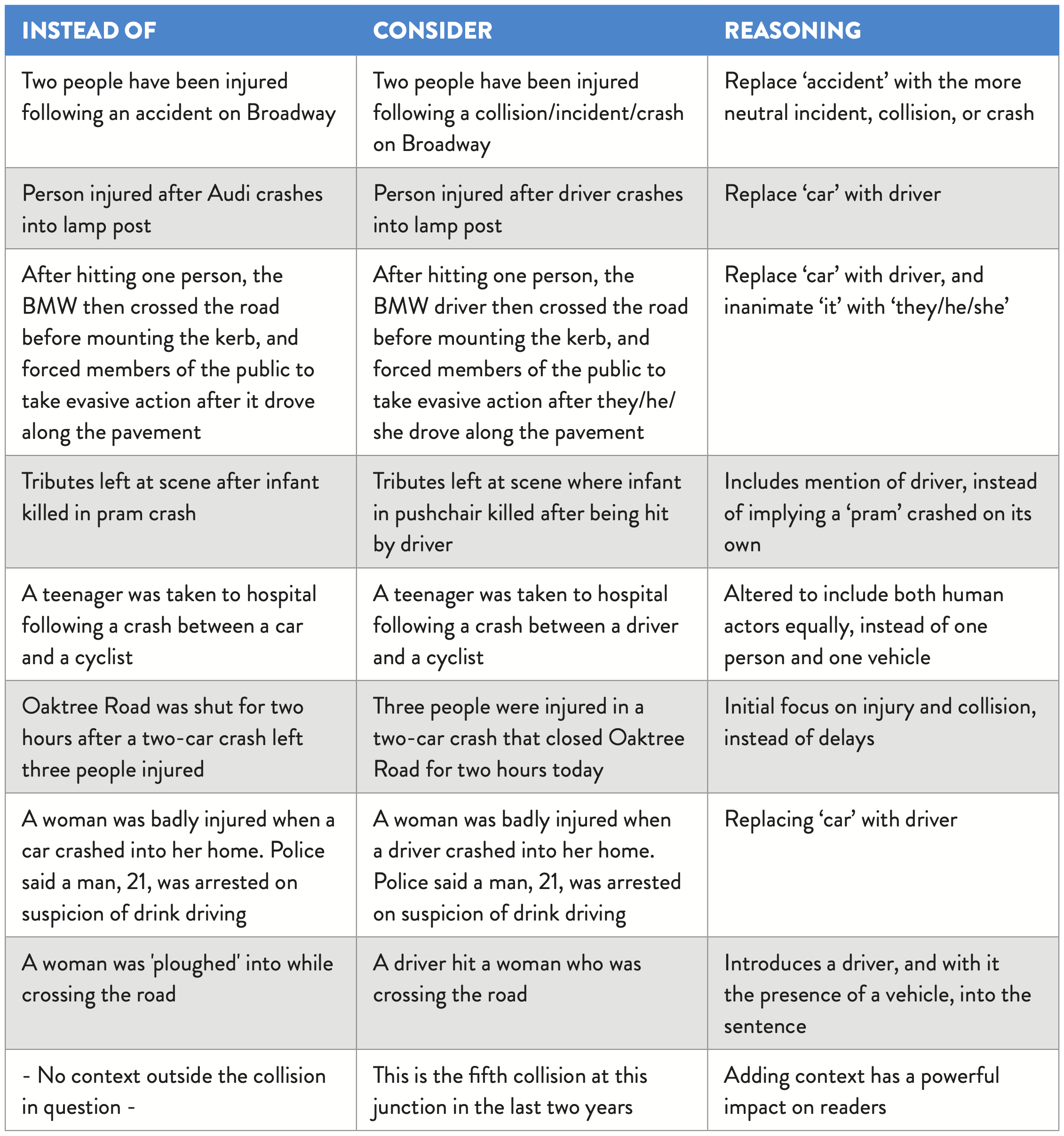
You can download this Road Collision Reporting Guidelines on this pagewhere you can find resources on which it is based. We share the documents in this article as well.
What the media say and the way they say it - that is, the way they represent reality - influences the perception that we as a society have of our surroundings. What may seem like a simple language job, a detail or a "fuss", is in fact a job of the utmost importance and one that often seems to be undervalued. As already mentioned, the media has an impact on how individuals view the world. Often, the media is the only way we have of contact with reality, because it is distant from us. The media represent the real world, describing it, portraying it, symbolizing it - they represent people, places, objects, events, identities, concepts; they don't do so in a neutral way, because journalistic work is based on the gaze of a journalist, who has his or her own particular sets of ideas, values, attitudes, and identities, assumed and normalized. Nor are there "good" or "bad" representations in the sense of being "right" or "wrong", "moral" or "immoral"; but they must be authentic and fair. Representation is a matter of power and therefore a political act.

